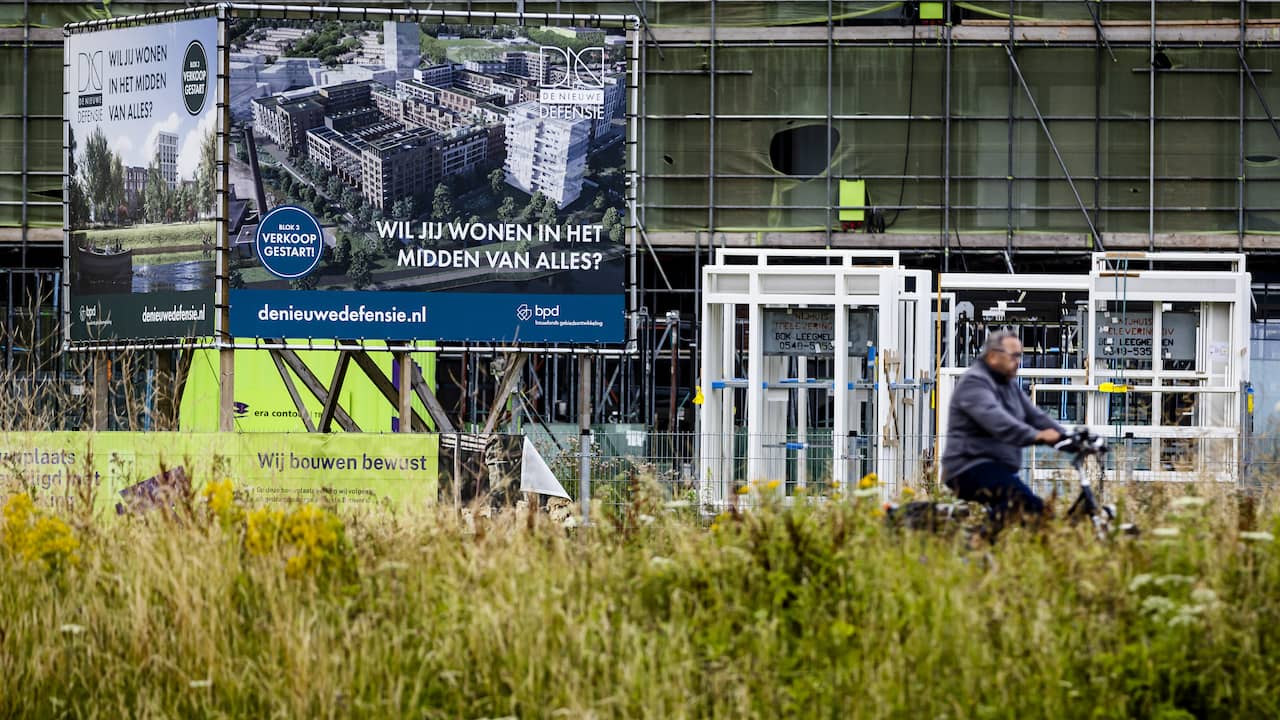09 Oct 2023 at 21:07
The Dutch climate is changing dramatically, and this also applies to the water levels in the North Sea. This is evident from the new climate scenarios from the KNMI published on Monday. But what does this report actually mean for Dutch society?
“With these climate scenarios, everyone can map the consequences of climate change and extreme weather, to keep the Netherlands safe and habitable in the future,” says Maarten van Aalst, the new director of the KNMI since February, in conversation with NU.nl .
What are the climate scenarios used for?
There are a few official functions, says Van Aalst. The KNMI scenarios thus provide guidance for the Delta Program and the National Climate Adaptation Strategy (NAS).
In addition, according to Van Aalst, provinces, municipalities, water boards, companies and citizens can use the scenarios to prepare for a changing climate.
How does that fit into the task of the KNMI?
That task has been officially recorded. “The KNMI must advise and warn society about risks related to weather, climate, seismology and other geophysical phenomena, and conduct research into those risks,” Van Aalst summarizes.
“The best known are of course warnings for extreme weather. These warnings are coming longer in advance and in more detail. But we also keep an eye on possible earthquakes, for example, from Groningen to volcanoes in the Caribbean.”
It is work that is never over and is also becoming more complex in a changing climate. “As a society, we have been quite surprised a few times. Everyone realizes that risks are increasing and that it is important to be well prepared.”
What is actually new in these climate scenarios (compared to the previous one, from 2014)?
“We work with new measurements and new models,” says Van Aalst. “First of all, they confirm that we already had a fairly good idea of the main points thirteen years ago.”
This is evident from some of the most important figures, such as the expected increase in average temperatures, which correspond. It was also clear that the Dutch winter would become increasingly mild and wetter, and the summer possibly drier.
But the latter insight has been sharpened considerably, says Van Aalst. “What is particularly new is the severity of the droughts in the dry scenario, in combination with an increased risk of heavy showers.”
According to Van Aalst, this also increases tension in Dutch water management: “We will notice that solutions to one problem can sometimes make the other worse. Consider, for example, rapid drainage of rainwater.”
Are these types of reports also received differently?
Society has also changed significantly since the first climate scenarios in 2006, says Van Aalst. “Many more people are realizing that climate change is already happening. We are in the middle of it.”
“Almost everyone knows someone who ended up on holiday this summer in the extremes that we expect in a warming climate. And the Netherlands has also had a lot to deal with in recent years, from the floods in Limburg to the hot, dry summers.”
This has also increased confidence in science, says Van Aalst. “I notice this in the reactions to our reports. It is no longer about a vision of the future that you can or cannot believe in, but about an ongoing trend that we are already in.”
“That increases the sense of urgency, but for some people also of powerlessness, or skepticism as to whether anything can be done. I hope that the scenarios can show that our choices still matter.” According to Van Aalst, this occurs at all levels: from global emission reductions to greening cities and other water management.
Who is the new KNMI director?
Van Aalst studied astrophysics in Utrecht and subsequently did PhD research into the Earth’s atmosphere at the German Max Planck Institute. He subsequently worked as a climate expert for the World Bank and the African Development Bank, was a lecturer at University College London, director of the Climate Center of the Red Cross and is still professor of Climate and Disasters at the Technical University of Twente.
Van Aalst has therefore had a remarkably broad and diverse climate career. That is, the first part. Van Aalst is only 49.
The climate scenarios are the second major climate report of this year for Van Aalst. As IPCC lead author, he contributed to the extensive summary of the last IPCC report, published in March.
“We have already been quite surprised by climate change a few times,” says new KNMI director Maarten van Aalst. Photo: KNMI
How will these climate reports end up in the history books?
The new scenarios let us look at a Netherlands that is far away: 2050, 2100. And we know that the biggest problems with sea level rise probably occur on much larger time scales. These large packages of future expectations will one day become history. How does Van Aalst hope that one day we can look back?
“I hope that one day people will look back and see that we took the information from these scenarios and from climate science more broadly seriously. I hope that we will then have adapted in time to deal with the climate consequences that can no longer be prevented.”
“And I hope that together with the rest of the world, we have reduced greenhouse gas emissions to such an extent that we do not end up in the most dramatic scenarios.”
2023-10-09 19:07:02
#KNMI #director #middle #climate #change #climate


